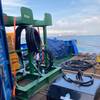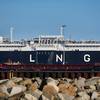Shipping accountant and business consultant Moore Stephens says a five per cent rise in crew wages last year has pushed up total operating costs for most types of ship.
Unveiling OpCost 2002, Moore Stephens' operating cost benchmarking tool, Chris Chasty, head of the shipping group, says, "We have been able to see some clear trends in operating costs over last year. Almost all the ship types we cover have seen total costs rise, with the average about five percent. Much of that has been due to direct wage costs climbing."
Increases in P&I costs and repair and maintenance bills also hit shipowners' operating costs, according to the report, although fluctuations for different ship types varied.
The OpCost 2002 report is extracted from Moore Stephens' database of actual running costs of over 600 ships for the accounting year 2001. This year's report covers the seventeen most common vessel types, two more than last year following the addition of reports on OBOs and coastal vessels. Operating costs are shown for each vessel type, broken down into five main groups of crew costs, stores, repairs and maintenance, insurance and administration. This year's report also includes an analysis of changes
since last year, and breakdowns of dry-docking costs, crew by region, lube
oil costs by engine capacity and vessels by P&I club.
Running cost information in OpCost is obtained on a confidential basis from shipping company clients of Moore Stephens, and from shipowners and managers who voluntarily submit accounts for inclusion. Clients receive free reports, voluntary contributors receive discounted reports, and the report is available for sale at $1,250 per copy. Special reports on details within the database can be tailored to individual needs.
"This is a unique tool for benchmarking costs, forensic accounting and preparing or checking business plans," says Chasty. "This year our sample of vessels has grown by over ten per cent, and we have seen demand for its use grow strongly too. There is simply no other way for owners and managers to see if they are paying out the right amounts or not. This is real data, from real ships, and gives a real comparison."
Subscribe for
Maritime Reporter E-News
Maritime Reporter E-News is the maritime industry's largest circulation and most authoritative ENews Service, delivered to your Email five times per week










